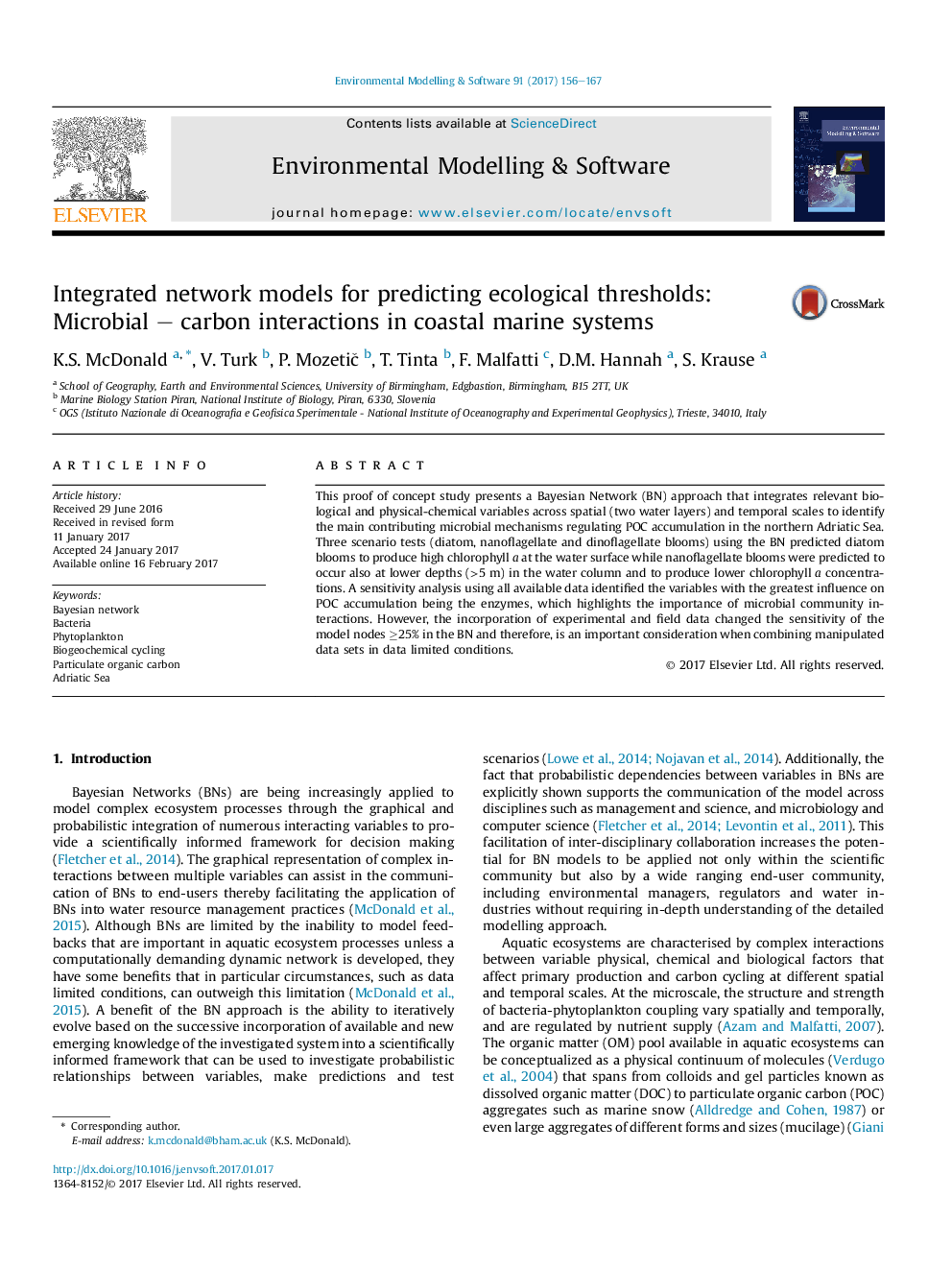| کد مقاله | کد نشریه | سال انتشار | مقاله انگلیسی | نسخه تمام متن |
|---|---|---|---|---|
| 4978202 | 1452259 | 2017 | 12 صفحه PDF | دانلود رایگان |
- Bayesian Network (BN) is used to predict microbial mechanisms that regulate particulate organic carbon (POC) accumulation.
- BN predicts POC accumulation by linking biotic factors with environmental conditions using field and experimental data.
- Enzymatic activity were identified by BN as to have the greatest influence on POC accumulation.
This proof of concept study presents a Bayesian Network (BN) approach that integrates relevant biological and physical-chemical variables across spatial (two water layers) and temporal scales to identify the main contributing microbial mechanisms regulating POC accumulation in the northern Adriatic Sea. Three scenario tests (diatom, nanoflagellate and dinoflagellate blooms) using the BN predicted diatom blooms to produce high chlorophyll a at the water surface while nanoflagellate blooms were predicted to occur also at lower depths (>5 m) in the water column and to produce lower chlorophyll a concentrations. A sensitivity analysis using all available data identified the variables with the greatest influence on POC accumulation being the enzymes, which highlights the importance of microbial community interactions. However, the incorporation of experimental and field data changed the sensitivity of the model nodes â¥25% in the BN and therefore, is an important consideration when combining manipulated data sets in data limited conditions.
Journal: Environmental Modelling & Software - Volume 91, May 2017, Pages 156-167
